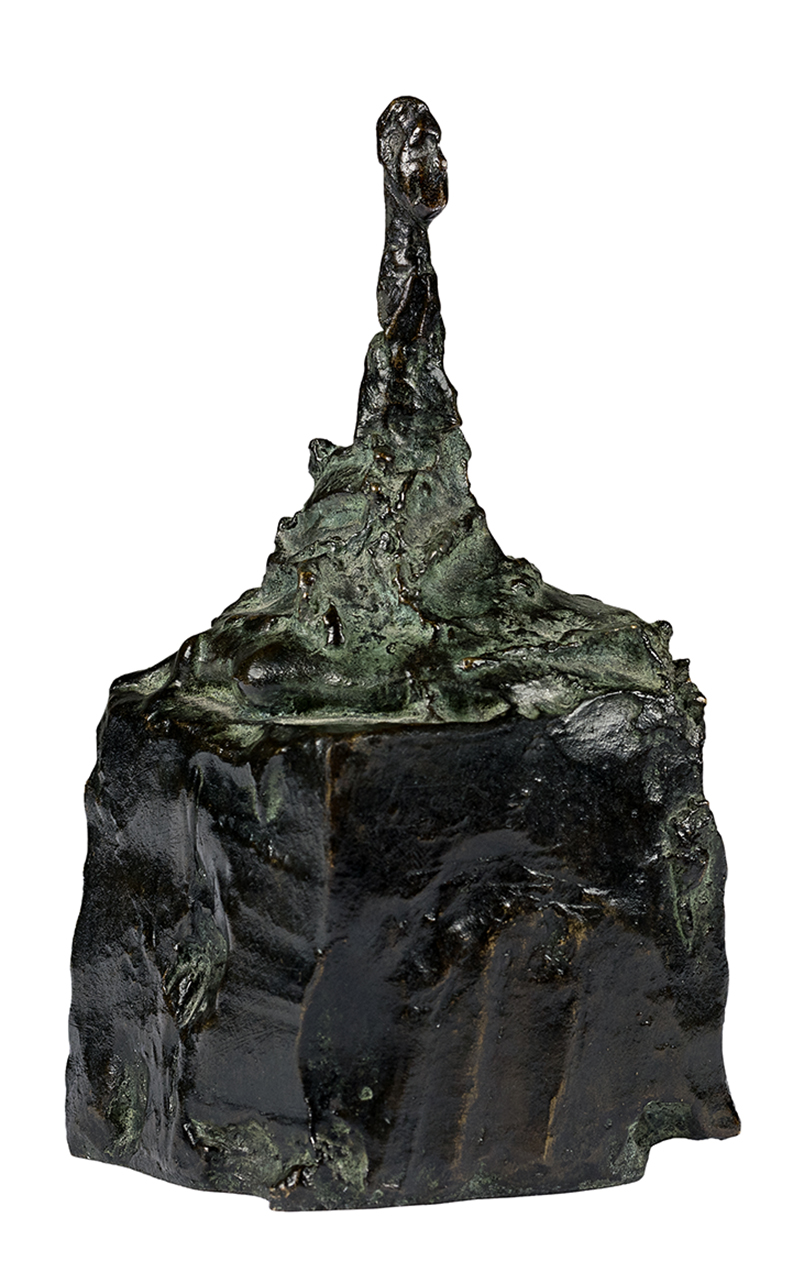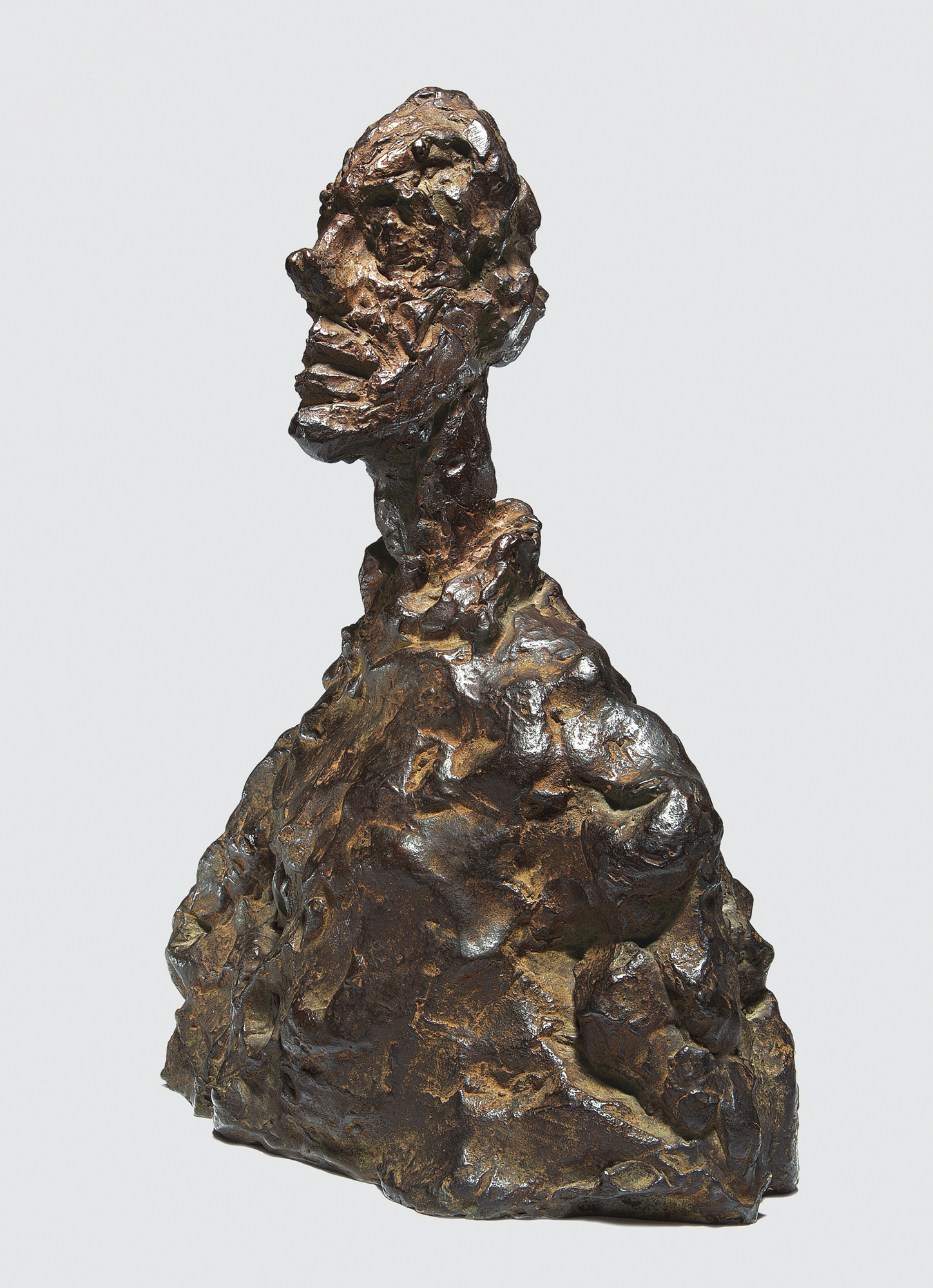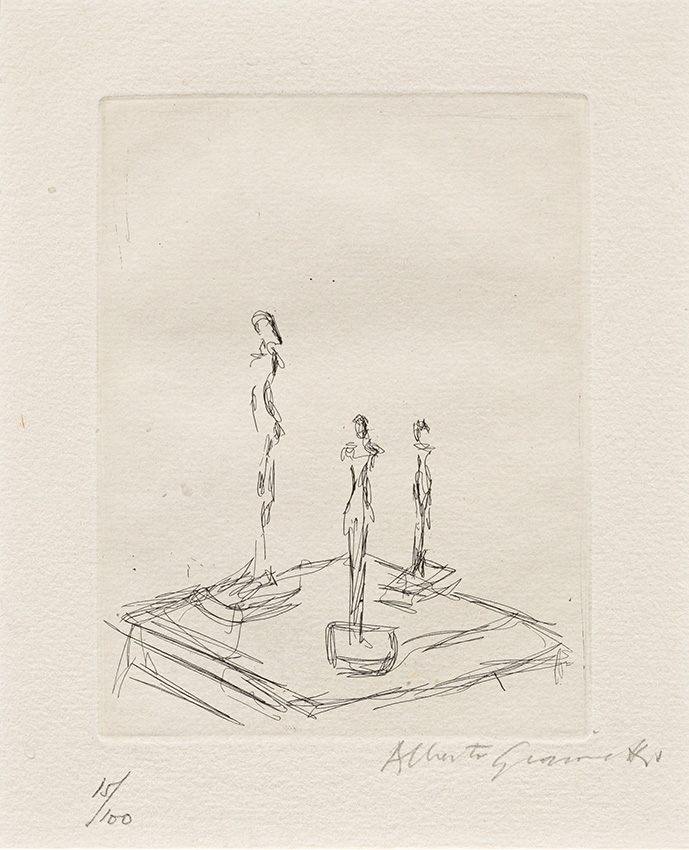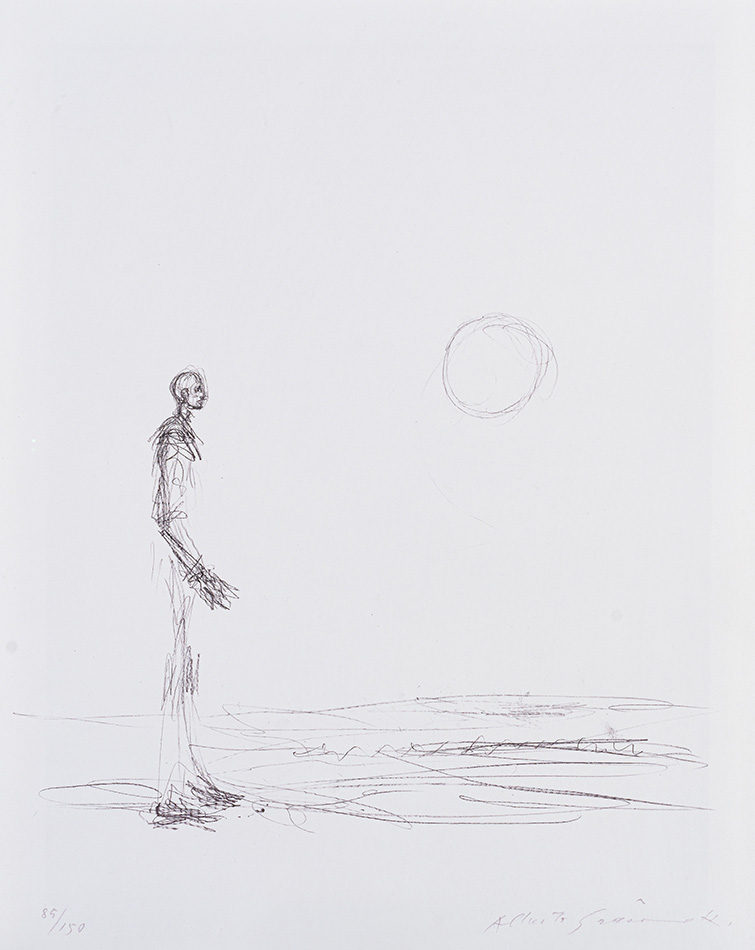Alberto Giacometti’s art manifested itself with intensity right from its very beginnings, when he was still an adolescent. A precocious prodigy, he was the first child of Annetta and Giovanni Giacometti, an eminent painter at the turn of the century. The painter Cuno Amiet, a close friend of Giovanni, would become Alberto Giacometti’s godfather. Giacometti managed to make the most of this artistic context, while also freeing himself from it. After a Post-Impressionist period, following in his father’s footsteps, he abandoned working from nature and dove into an avant-garde art verging on abstraction.
In Paris, where he was connected from 1925 to the Surrealist group led by André Breton, he developed sculptural works featuring stylised and symbolic forms. His success did not prevent a complete break: in 1934, in search of a new aesthetic form to give to the human figure, he returned to life drawing, which resulted in him being ejected from the group. It was at this time that the miniaturisation process of his sculpted figures began. He settled in Geneva in 1941, where he stayed until the end of the Second World War, upon which he returned to Paris in 1945. Giacometti’s time in Geneva corresponded to a difficult phase of experimentation and artistic evolution which made way for the mature works.
After a long struggle against the contracting of the material, his sculptures from the 1950s gained height and corporeity – while still keeping their characteristic spindly appearance. Despite success and honours, the creative crises that were the driving force behind his art would never cease. Giacometti was the embodiment of a type of artist on a perpetual quest, whose trajectory was littered with radical questionings and reconsiderations. The creator of an immense oeuvre, he left a unique imprint on the history of 20th century art.
In Paris, where he was connected from 1925 to the Surrealist group led by André Breton, he developed sculptural works featuring stylised and symbolic forms. His success did not prevent a complete break: in 1934, in search of a new aesthetic form to give to the human figure, he returned to life drawing, which resulted in him being ejected from the group. It was at this time that the miniaturisation process of his sculpted figures began. He settled in Geneva in 1941, where he stayed until the end of the Second World War, upon which he returned to Paris in 1945. Giacometti’s time in Geneva corresponded to a difficult phase of experimentation and artistic evolution which made way for the mature works.
After a long struggle against the contracting of the material, his sculptures from the 1950s gained height and corporeity – while still keeping their characteristic spindly appearance. Despite success and honours, the creative crises that were the driving force behind his art would never cease. Giacometti was the embodiment of a type of artist on a perpetual quest, whose trajectory was littered with radical questionings and reconsiderations. The creator of an immense oeuvre, he left a unique imprint on the history of 20th century art.



